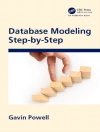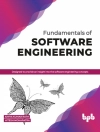Automatic detection and segmentation of anatomical structures in medical images are prerequisites to subsequent image measurements and disease quantification, and therefore have multiple clinical applications. This book presents an efficient object detection and segmentation framework, called Marginal Space Learning, which runs at a sub-second speed on a current desktop computer, faster than the state-of-the-art. Trained with a sufficient number of data sets, Marginal Space Learning is also robust under imaging artifacts, noise and anatomical variations. The book showcases 35 clinical applications of Marginal Space Learning and its extensions to detecting and segmenting various anatomical structures, such as the heart, liver, lymph nodes and prostate in major medical imaging modalities (CT, MRI, X-Ray and Ultrasound), demonstrating its efficiency and robustness.
Содержание
Introduction.- Marginal Space Learning.- Comparison of Marginal Space Learning and Full Space Learning in 2D.- Constrained Marginal Space Learning.- Part-Based Object Detection and Segmentation.- Optimal Mean Shape for Nonrigid Object Detection and Segmentation.- Nonrigid Object Segmentation: Application to Four-Chamber Heart Segmentation.- Applications of Marginal Space Learning in Medical Imaging.- Conclusions and Future Work.












